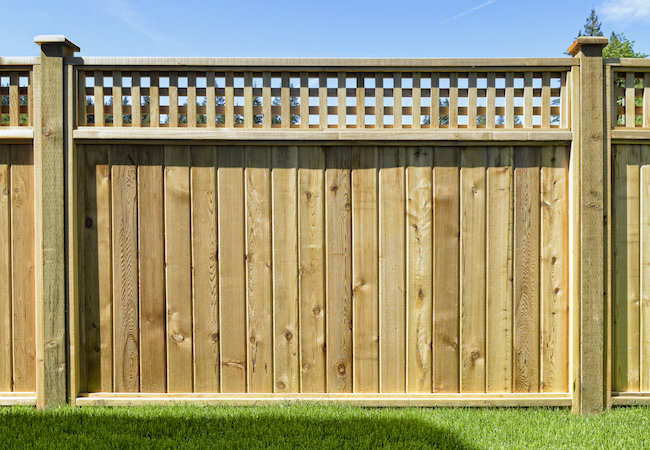Featured

Amongst the most popular alternatives, timber, plastic, and aluminum each deal special benefits and drawbacks. Below's a failure of the pros and cons of these 3 common fencing materials.
Timber Fencing. Timber secure fencing has actually been an ageless choice for property owners as a result of its natural charm and flexibility.
Pros:. Visual Charm: Timber supplies a traditional and cozy look that matches a selection of building styles. Adjustable: It can be repainted, stained, or cut right into unique designs to fit personal choices. Cost-Effective: At first, wood fencing can be an inexpensive choice compared to other products. Eco-Friendly: Timber is a renewable energy and can be sustainably sourced. Disadvantages:. High Maintenance: Wood requires regular securing, discoloration, or paint to avoid rot, insect damage, and weathering. Resilience Issues: Without appropriate treatment, wood can warp, split, or degeneration gradually, particularly in locations with high moisture. Shorter Life expectancy: A timber fencing typically lasts 10-20 years, depending upon the type of timber and level of maintenance. Wood is excellent for those that value a traditional look and agree to commit to its upkeep.
Vinyl Secure Fencing. Plastic is a contemporary, low-maintenance secure fencing alternative that has actually grown in appeal over the last few years.

Pros:. Low Upkeep: Vinyl does not call for paint, discoloration, or securing and can be easily cleaned up with soap and water. Climate Resistant: It holds up against severe weather without decomposing, rusting, or warping. Lasting: Plastic fences can last 20-30 years with marginal maintenance. Range of Styles: Available in lots of colors, layouts, and structures, some vinyl options mimic the appearance of wood. Cons:. Higher Upfront Cost: Vinyl fence can be a lot more pricey at first compared to wood. Brittleness in Cold Weather: In severe cool, vinyl might fracture or end up being breakable. Minimal Services: Specific panels can be hard to replace, requiring mindful matching to the existing fencing. Plastic is ideal matched for homeowners seeking a long lasting, low-maintenance remedy with contemporary visual appeals.
Light Weight Aluminum Fencing. Light weight aluminum fence is a sturdy and light-weight option, frequently chosen for its modern look and versatility.
Pros:. Rust-Resistant: Light weight aluminum does not corrosion, making it an outstanding option for moist or wet climates. Low Upkeep: Needs very little maintenance and is easy to tidy. Long lasting: While light-weight, light weight aluminum is strong enough to endure lots of environmental conditions. Long Life-span: Can last several decades without considerable wear or degeneration. Variety of Styles: Provides a sophisticated and sleek appearance, commonly utilized for decorative or decorative objectives. Cons:. Greater Expense: The preliminary financial investment for light weight aluminum fencing is greater than wood or vinyl. Less Personal privacy: Light weight aluminum fencings are commonly created with open pickets, making them much less reliable for privacy. Prone to Damages: Although durable, light weight aluminum can be dented by solid influences. Light weight aluminum is suitable for those seeking a fashionable, resilient option that requires minimal care.
Making the Right Option. Each fence material-- wood, light weight aluminum, and vinyl-- offers distinctive benefits and disadvantages. Your choice ought to depend on your details priorities, such as spending plan, maintenance choices, climate, and visual objectives:
If you love a traditional look and don't mind normal maintenance,Select timber. Choose vinyl if you want a low-maintenance, weather-resistant fence with modern charm. Choose light weight aluminum if you focus on durability, corrosion resistance, and a smooth style. By weighing these disadvantages and pros, you can choose a fencing product that improves your building while meeting your functional requirements.
Latest Posts
Uncover Montclare Auto Repair’s Premier Services and Why Drivers Trust Them
Published May 27, 25
1 min read
Boost Your Home's Exterior with Weathercraft's Siding Solutions
Published May 23, 25
1 min read
Shield Your Home with Quality Residential Roofing
Published May 23, 25
1 min read
More
Latest Posts
Uncover Montclare Auto Repair’s Premier Services and Why Drivers Trust Them
Published May 27, 25
1 min read
Boost Your Home's Exterior with Weathercraft's Siding Solutions
Published May 23, 25
1 min read
Shield Your Home with Quality Residential Roofing
Published May 23, 25
1 min read